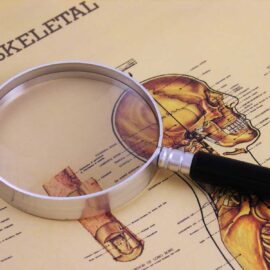Our bodies are wonderfully complex masterpieces of natural development. Just think, it takes less than a year for a baby to be conceived, birthed, and begin developing a personality of its own — mere months after coming into the world, a baby will already be smiling, laughing, and forming a bond with their parents, benefiting from the healthy function of brand new organs.
One of the most fascinating things about the human body is its efficiency. In order to keep these walking factories up and moving, each part has an ultimate goal to achieve and numerous smaller functions to accomplish that help it get there. For instance, our eyes are designed to help us see. But in order to do that they must be able to gather light, send signals to the brain via nerve impulse, and switch between multiple focuses within the aperture of the pupil.
There are numerous parts of the body that do this — managing entire interconnected systems in order to accomplish a broader goal — and treating them requires the expertise of a specialized doctor. This puts a premium on the many Utah orthopedic surgeons practicing today, who ensure that our bones are able to perform their many functions.
More than just a Frame
Some might be surprised by the knowledge that bones are more than the body’s internal scaffolding. As any shoulder surgeon can attest, there are numerous ways in which the musculoskeletal system affects our daily lives. Parts of that system include:
- Bones
- Cartilage
- Muscles
- Joints
- Ligaments
- Tendons
When everything is working properly, your system of muscles, bones, and nerves help your body spring into motion. That’s the big goal: get the body moving. And to do that, there is a process involving your brain sending instructions to the muscles, which in turn pull tendons attached to bones and make them move.
Thanks to this series of electrical signals and the secretion of certain chemicals, your muscles and your brain speak to one another and perform the actions. Should anything happen to these tendons or joints, an accomplished shoulder or elbow surgeon like Dr. Skedros could identify and fix the problem.
The Blood Makers
Of course, bones are a tremendously critical part of this whole system (and the reason our Utah orthopedic surgeons are so important), but are they simply the inanimate objects that have no other purpose but to be acted upon by tendons and muscles? Perhaps there’s another, equally efficient role that they play.
As a matter of fact, bones provide a lot more than just structure to the body. They are little factories in and of themselves. One of the major functions of the bones is to create and maintain our blood. The process is called hematopoiesis and is responsible for the creation of your red and white blood cells, as well as your platelets.
- Around 1% of the body’s blood cells are replaced daily.
- Occurring mostly in the bone marrow, stem cells multiply until they become precursor cells (cells slated to become part of the circulatory system).
- The precursor cells continue to mature and divide until they transform into one of the aforementioned blood cells.
- Red blood cells can last up to 120 days, while white blood cells may last only hours.
When it comes to ensuring that your musculoskeletal system is functioning properly, especially after a traumatic injury, you want a surgeon who has spent their entire career dedicated to bones. Dr. Skedros has performed thousands of procedures in Utah and is considered one of the finest elbow surgeons in the country.
Get to know more about his practice here, and call today for a consultation.

